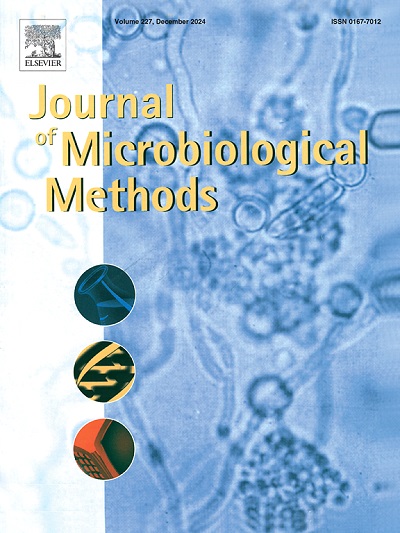Inhibition of Pseudomonas aeruginosa with silver in a new synthetic medium: Investigation on the MIC, growth rate and lag-phase at the lower limit
IF 1.7
4区 生物学
Q4 BIOCHEMICAL RESEARCH METHODS
引用次数: 0
Abstract
The antimicrobial properties of silver are well-known and widely applied. Although it is known, that silver interacts and binds on complex organic substances like proteins, many experiments on the sterilisation efficiency and inhibiting properties are still carried out in complex culture media. Given, that silver is often applied in environments with no or few organic substrates, like cooling circuits or in the treatment of tap and process water, further insight on the minimum inhibition concentration and lethal concentration at those conditions is of interest. We have developed a defined medium for the standard bacterium Pseudomonas aeruginosa that is free of complex organic carbon with equal cultivation properties like commonly used nutrient solutions. With this medium we could narrow the range of the MIC between 2.5 μg to 10 μg∙L−1, which very much overlaps with the bactericidic concentration depending on the initial concentration of bacteria cells. These results might help to optimise the technical application of silver. We further observed a delayed growth of bacterial cultures of up to three days compared to silver free controls, which is caused either by a partial sterilisation down to theoretical one surviving cell or by a prolonged lag phase. Based on these observations we recommend a prolonged incubation for experiments on sterilisation with silver and the use of defined media, which do not interact with the disinfecting agent.

求助全文
约1分钟内获得全文
求助全文
来源期刊

Journal of microbiological methods
生物-生化研究方法
CiteScore
4.30
自引率
4.50%
发文量
151
审稿时长
29 days
期刊介绍:
The Journal of Microbiological Methods publishes scholarly and original articles, notes and review articles. These articles must include novel and/or state-of-the-art methods, or significant improvements to existing methods. Novel and innovative applications of current methods that are validated and useful will also be published. JMM strives for scholarship, innovation and excellence. This demands scientific rigour, the best available methods and technologies, correctly replicated experiments/tests, the inclusion of proper controls, calibrations, and the correct statistical analysis. The presentation of the data must support the interpretation of the method/approach.
All aspects of microbiology are covered, except virology. These include agricultural microbiology, applied and environmental microbiology, bioassays, bioinformatics, biotechnology, biochemical microbiology, clinical microbiology, diagnostics, food monitoring and quality control microbiology, microbial genetics and genomics, geomicrobiology, microbiome methods regardless of habitat, high through-put sequencing methods and analysis, microbial pathogenesis and host responses, metabolomics, metagenomics, metaproteomics, microbial ecology and diversity, microbial physiology, microbial ultra-structure, microscopic and imaging methods, molecular microbiology, mycology, novel mathematical microbiology and modelling, parasitology, plant-microbe interactions, protein markers/profiles, proteomics, pyrosequencing, public health microbiology, radioisotopes applied to microbiology, robotics applied to microbiological methods,rumen microbiology, microbiological methods for space missions and extreme environments, sampling methods and samplers, soil and sediment microbiology, transcriptomics, veterinary microbiology, sero-diagnostics and typing/identification.
 求助内容:
求助内容: 应助结果提醒方式:
应助结果提醒方式:


